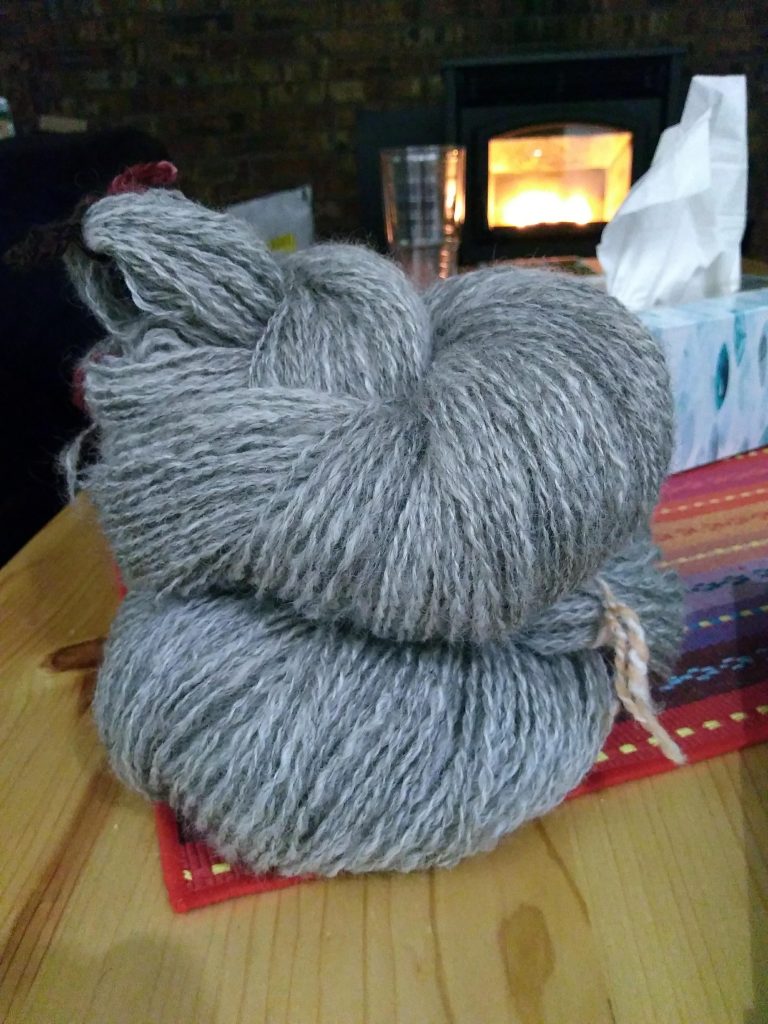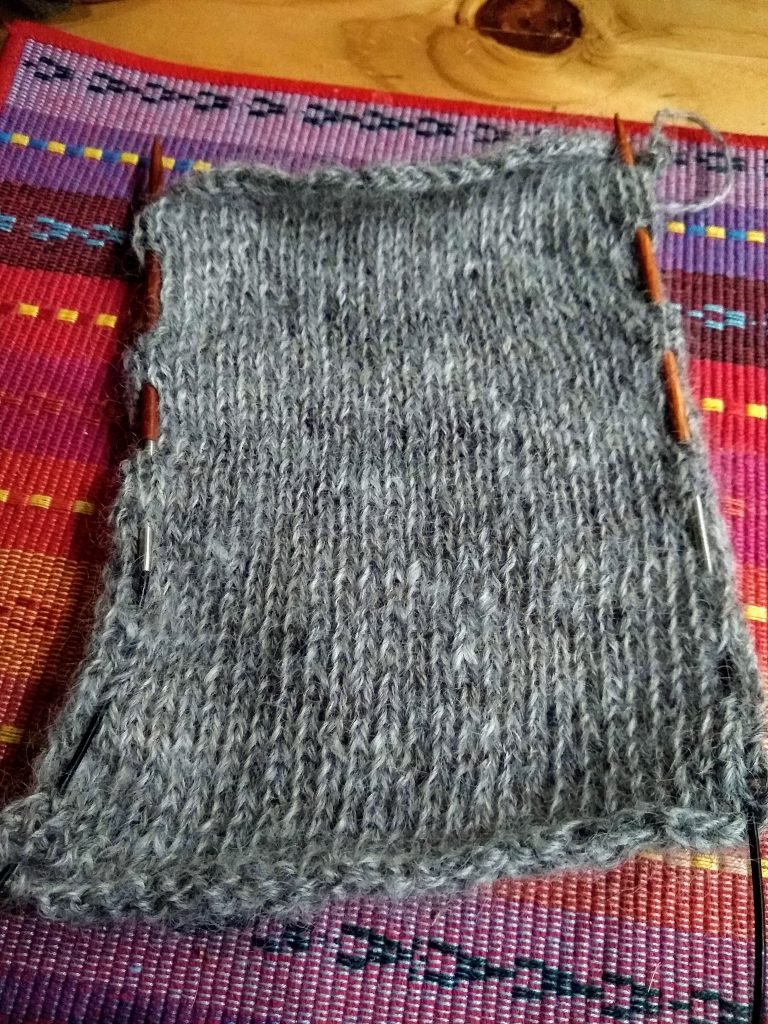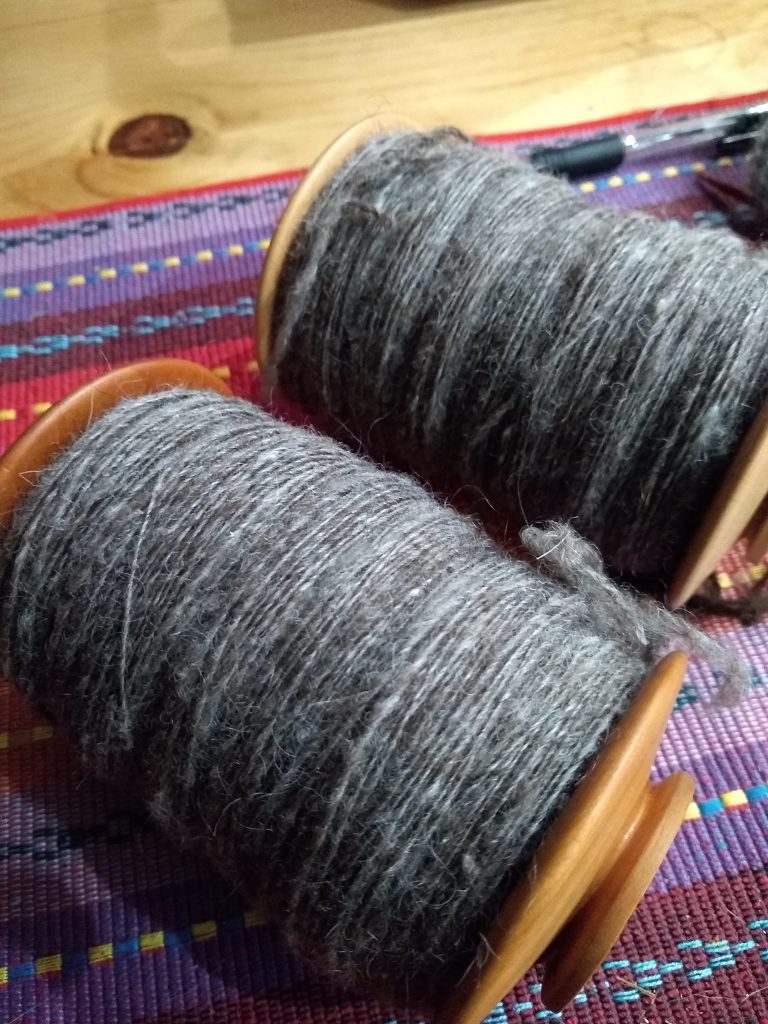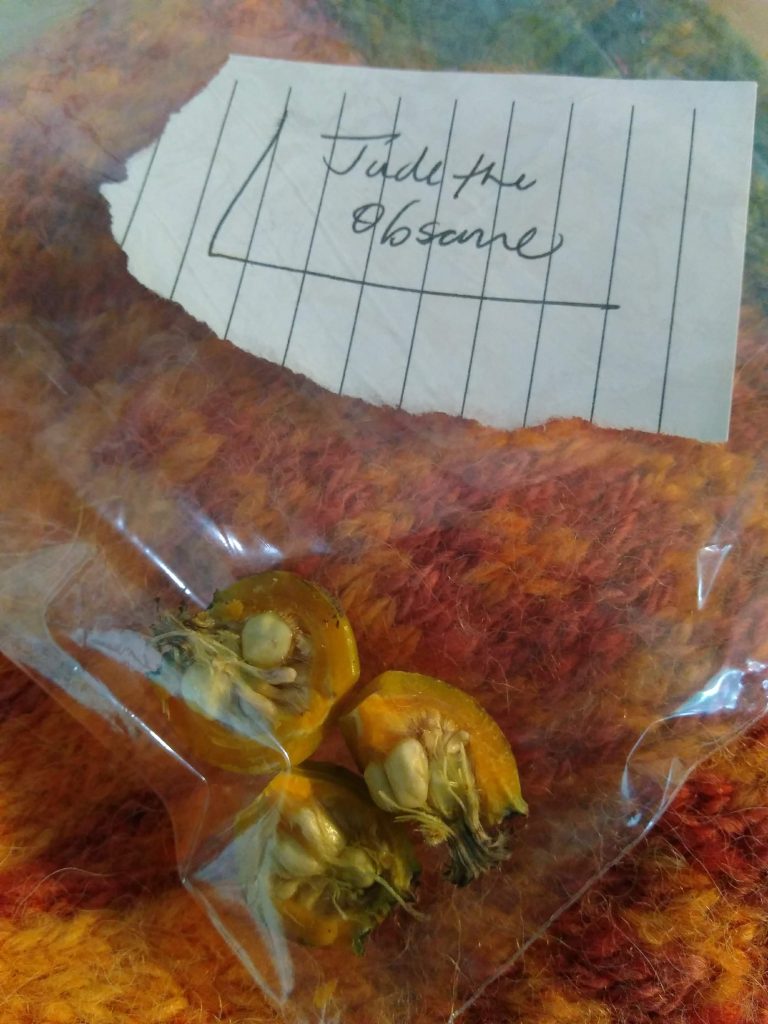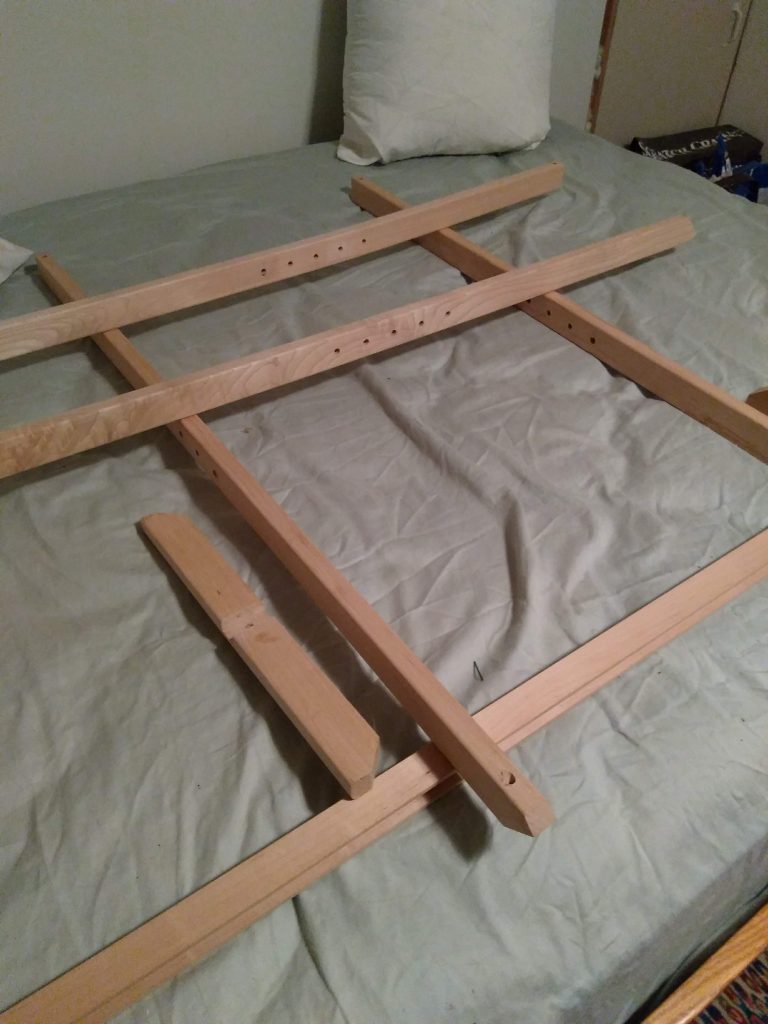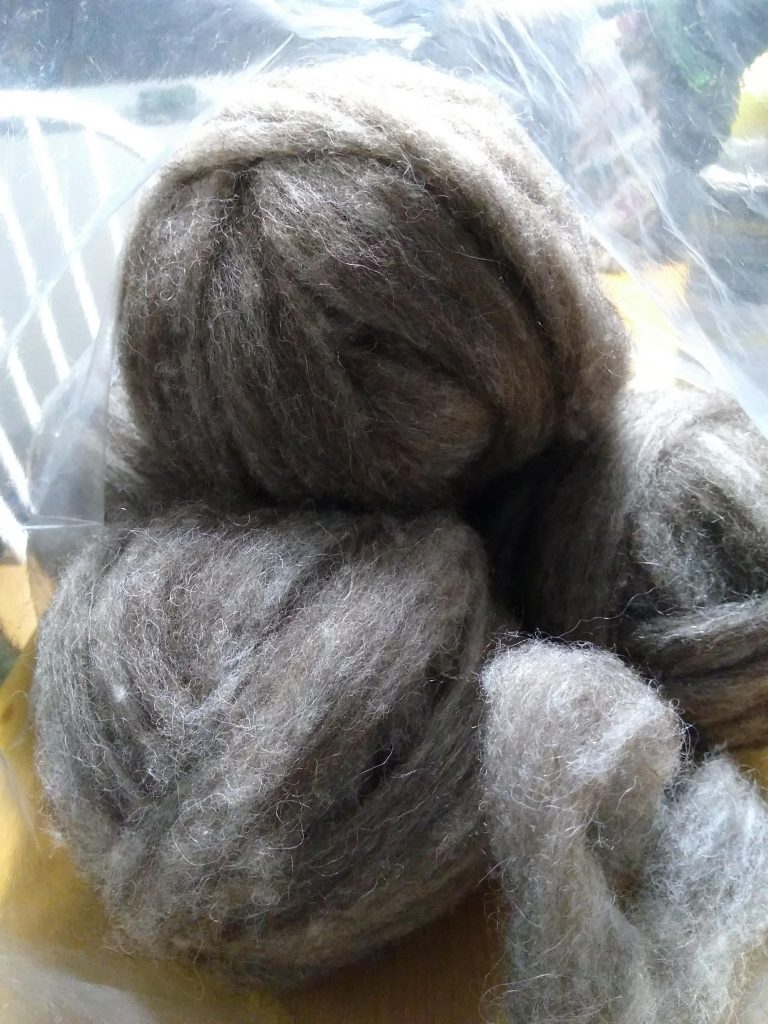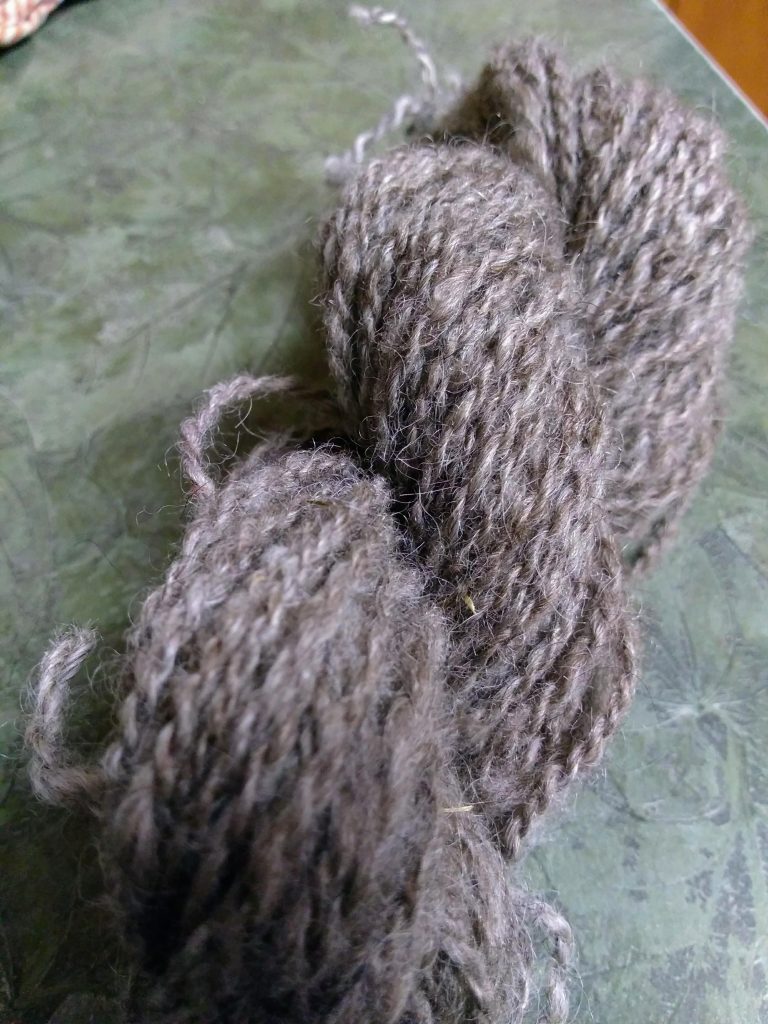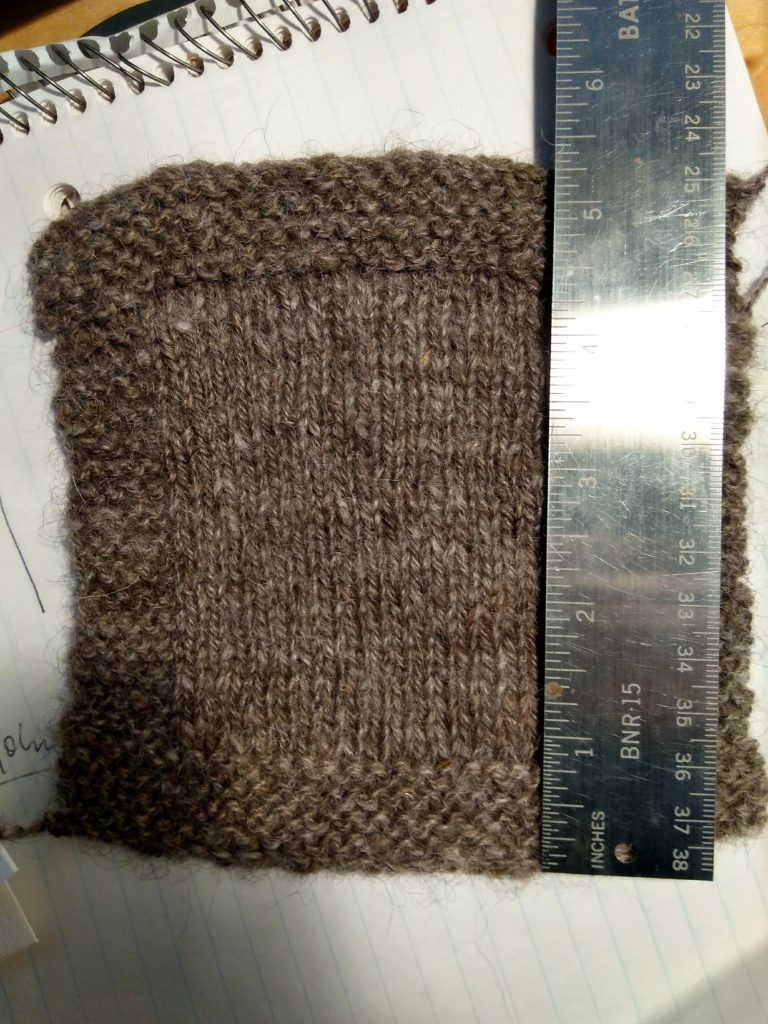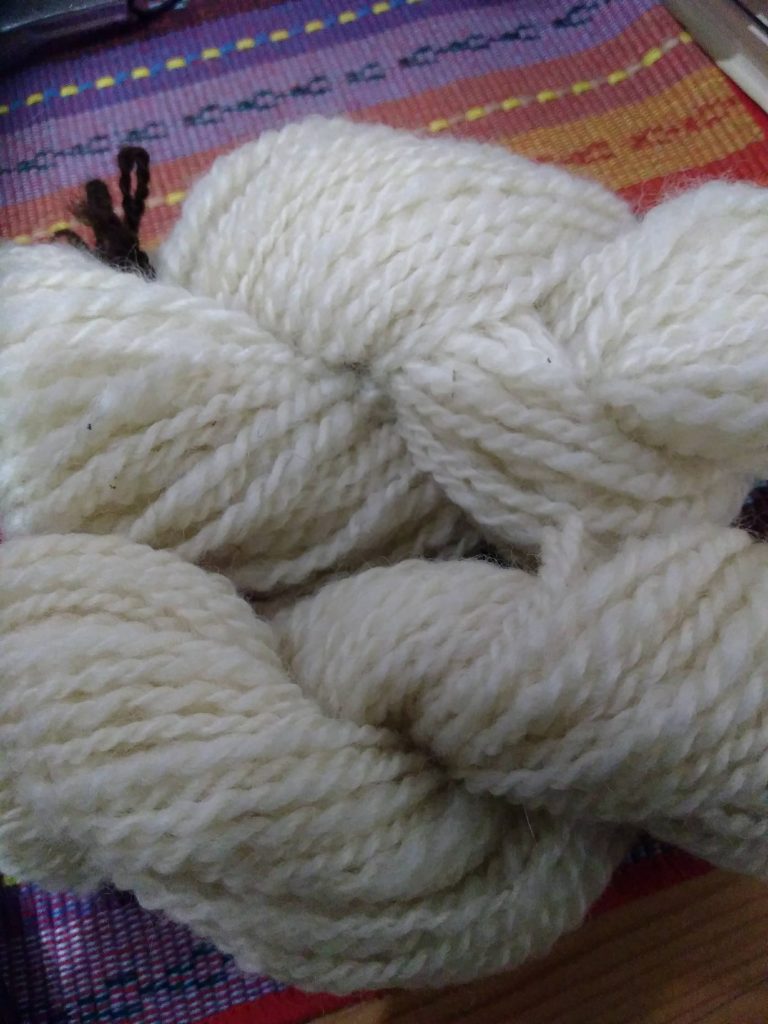I spent a fair bit of time this past week thinking about how to approach the Layton project, vis-a-vis the gauge issue.
After looking at the schematics and instructions in the pattern, it occurred to me that by adjusting the frequency of the increases and decreases to accommodate the difference in row gauge I could preserve the intended shaping of the garment pieces.
The next challenge was to figure the approximate yardage that would be required and how I’d use the various shades of Dottie to best effect
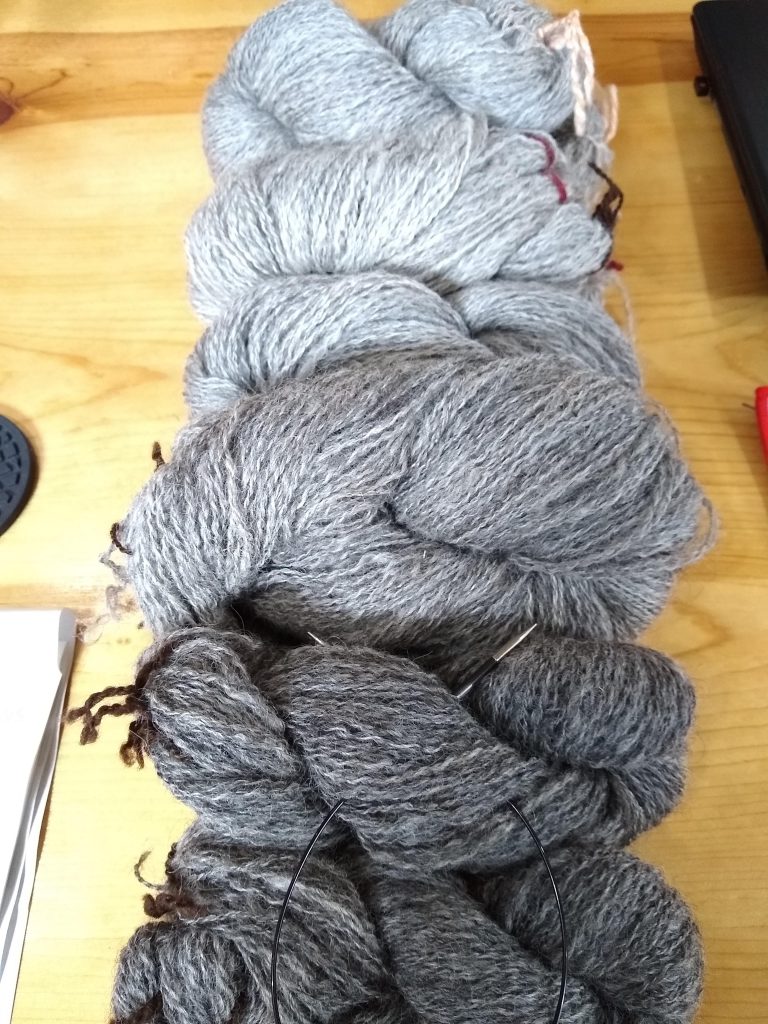
I originally thought perhaps I’d knit the body in the lightest shade and go darker on the sleeves, but the yardage distribution didn’t work out in that scheme. So I think I’ll go with a gradient- dark to light, bottom to top.
Still need need to work out exactly how much of each piece will need to be worked in the darker shades, but I feel like I’m on the right track finally.
Also finished up spinning Teo’s wool for The Shepherd- here it is in all of it’s soft and squishy goodness- almost 700 yards of it at an average of about 85 yds/ounce.
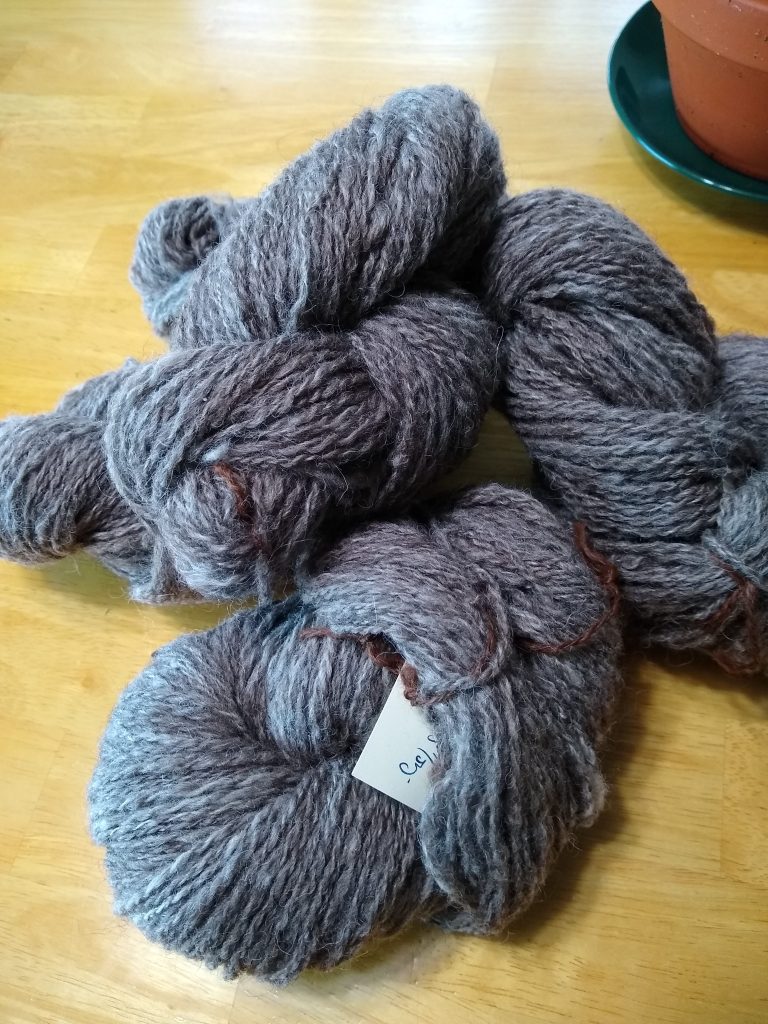
And,,,,, here is the roses bit! You remember a few weeks back when i potted up those rose seeds that had been sleeping in the fridge all winter?
Well, one of those little guys has woken up!
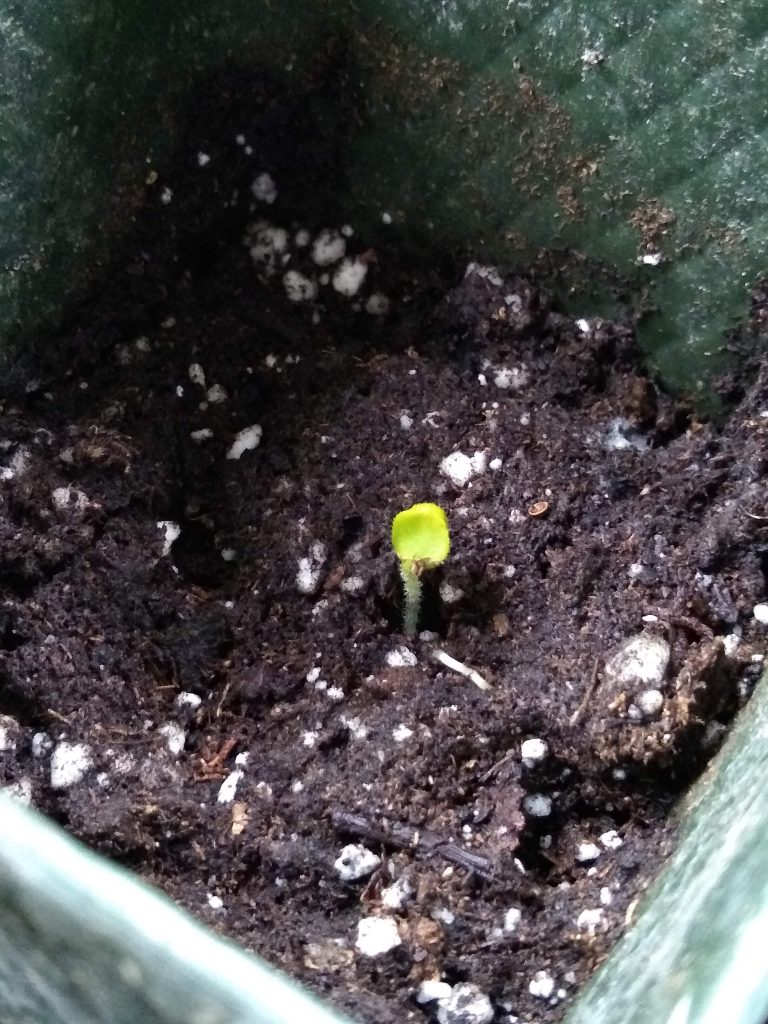
So here’s looking forward to spring!
And until then, I’ll keep mucking out the shed and spreading fresh new straw, with the help of the chicken crew.
and we’ll try to enjoy whatever little bit of sunshine comes our way


